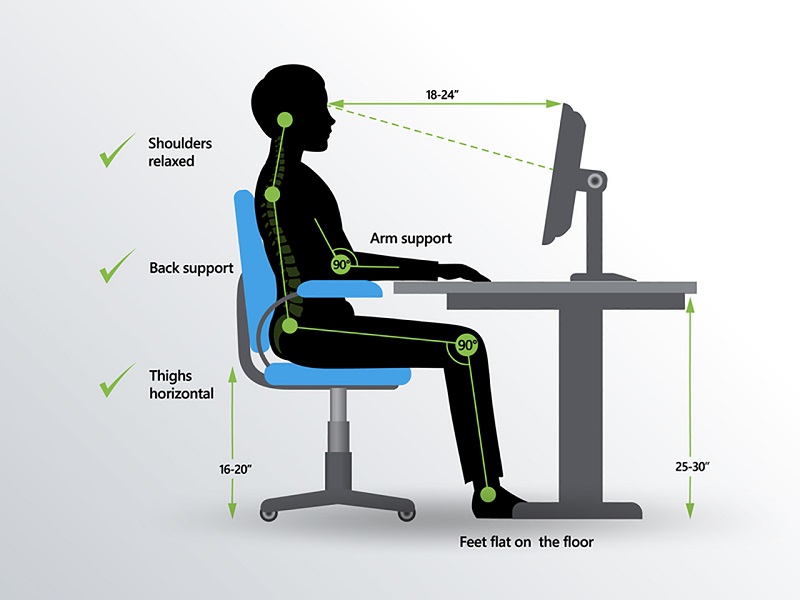In the hustle and bustle of the modern office, health often takes a backseat. However, the way you set up your workspace can significantly impact your well-being. Let’s explore the realm of office ergonomics and how it can be a game-changer for your health.
Understanding Office Ergonomics: Beyond Comfort
Description:
Ergonomics is not just about comfortable chairs and desks; it’s about creating a workspace that promotes health, productivity, and overall well-being.
The Science Behind It:
Ergonomics involves designing a workspace to fit the needs of the worker. It considers factors like desk height, chair comfort, screen position, and even lighting to reduce the risk of musculoskeletal problems.
Optimizing Your Desk Setup: A Health Investment
1. Chair Matters
Description:
Invest in a chair that supports the natural curve of your spine. This not only ensures comfort but also reduces the risk of back pain.
2. Desk Height Dynamics
Description:
Adjust your desk height to maintain a 90-degree angle at your elbows and wrists. This simple tweak can prevent strain on your joints.
3. Screen Eye Level
Description:
Position your computer screen at eye level to avoid neck strain. A screen too high or too low can lead to discomfort and even long-term issues.
4. Keyboard and Mouse Alignment
Description:
Ensure that your keyboard and mouse are at a comfortable distance, allowing your arms to rest at a natural angle. This minimizes strain on your wrists.
5. Lighting Wisdom
Description:
Optimize lighting to reduce eye strain. Natural light is ideal, but if that’s not possible, use soft, ambient lighting to create a comfortable work atmosphere.
Health Benefits of Ergonomics: More Than Just Comfort
1. Alleviates Back Pain
Description:
A well-optimized workspace promotes a neutral spine posture, reducing the risk of chronic back pain that often plagues office workers.
2. Enhances Productivity
Description:
Comfortable workspaces boost focus and efficiency. When your body is at ease, your mind can fully engage with tasks, leading to increased productivity.
3. Mitigates Eye Strain
Description:
Proper screen positioning and lighting significantly reduce eye strain, preventing headaches and discomfort associated with prolonged screen time.
4. Addresses Repetitive Strain Injuries
Description:
Ergonomic setups minimize repetitive movements that can lead to injuries. This proactive approach is a key element in preventing long-term health issues.
5. Supports Mental Well-being
Description:
A comfortable workspace positively impacts mental health. It creates a conducive environment for concentration and reduces stress associated with discomfort.
FAQs – Frequently Asked Questions
Q: Can ergonomic changes really make a difference in my health?
A: Yes, small ergonomic adjustments can lead to significant improvements in your health and well-being over time. Consistency is key.
Q: Do I need to buy expensive ergonomic furniture for my office?
A: Not necessarily. While specialized ergonomic furniture is available, simple adjustments like chair height and screen positioning can make a substantial difference without a hefty investment.
Q: How often should I take breaks to maintain ergonomic health?
A: It’s recommended to take short breaks every 30 minutes to stretch and move around. This helps prevent stiffness and promotes blood circulation.
Q: Can ergonomics help with mental health at work?
A: Absolutely. A comfortable and well-organized workspace contributes to a positive work environment, reducing stress and enhancing mental well-being.
Q: Are standing desks better for my health?
A: Standing desks can be beneficial in reducing prolonged sitting. However, it’s essential to find a balance and avoid standing for extended periods, as it comes with its own set of challenges.
Conclusion
Your office setup goes beyond aesthetics; it directly impacts your health and work performance. By embracing ergonomic principles, you not only create a comfortable workspace but also invest in your long-term well-being. Make these adjustments today for a healthier and happier work life.




